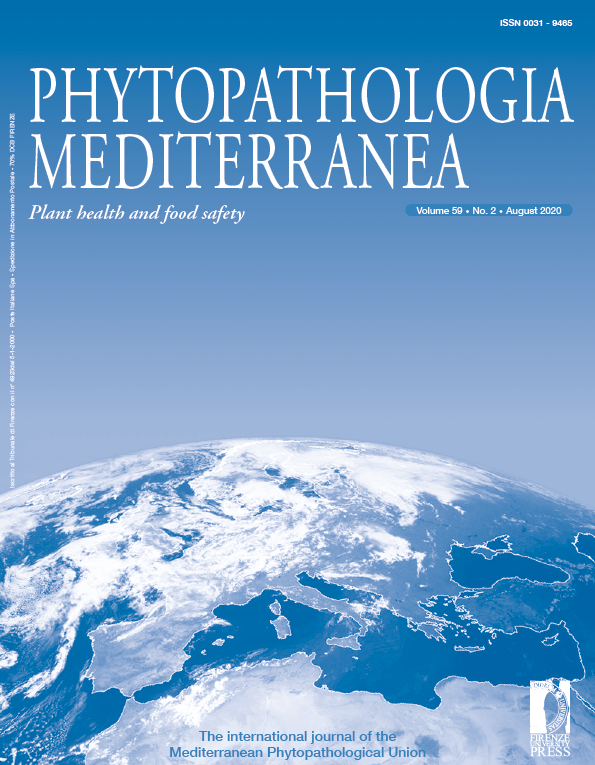Published 2020-07-17
Keywords
- Vaccinium corymbosum,
- Neofusicoccum,
- Diaporthe,
- Cadophora,
- Peroneutypa
- multi-locus typing ...More
How to Cite
Abstract
Vaccinium spp. are cultivated worldwide due to their important commercial value and fruit health benefits. However, the increasing global trade of berries and plants has resulted in major incidence of the diseases related to this crop. Stem blight and dieback associated with different fungal pathogens are the most common symptoms observed, and represent serious threats to blueberry production. Surveys were conducted in highbush blueberry orchards in Cuneo province, Northern Italy, to assess the fungal species diversity associated with stem blight and dieback. A total of 38 isolates were collected from symptomatic plants of the cultivars ‘Last Call’, ‘Blue Ribbon’ and ‘Top Shelf’. Four fungal species were identified through multi-locus typing and morphological characters: Neofusicoccum parvum, Diaporthe rudis, Cadophora luteo-olivacea and Peroneutypa scoparia. Molecular analyses included three different genomic regions: ITS, tub2, and tef1. Pathogenicity tests showed that all four species were pathogenic to blueberry plants. Neofusicoccum parvum was the most aggressive species. The present study increases understanding of the fungi associated with blueberry stem blight and dieback, providing preliminary knowledge for further studies on disease epidemiology and management strategies. This is the first report worldwide of P. scoparia and C. luteo-olivacea on Vaccinium corymbosum, as well as the first report of D. rudis on blueberry in Italy.







